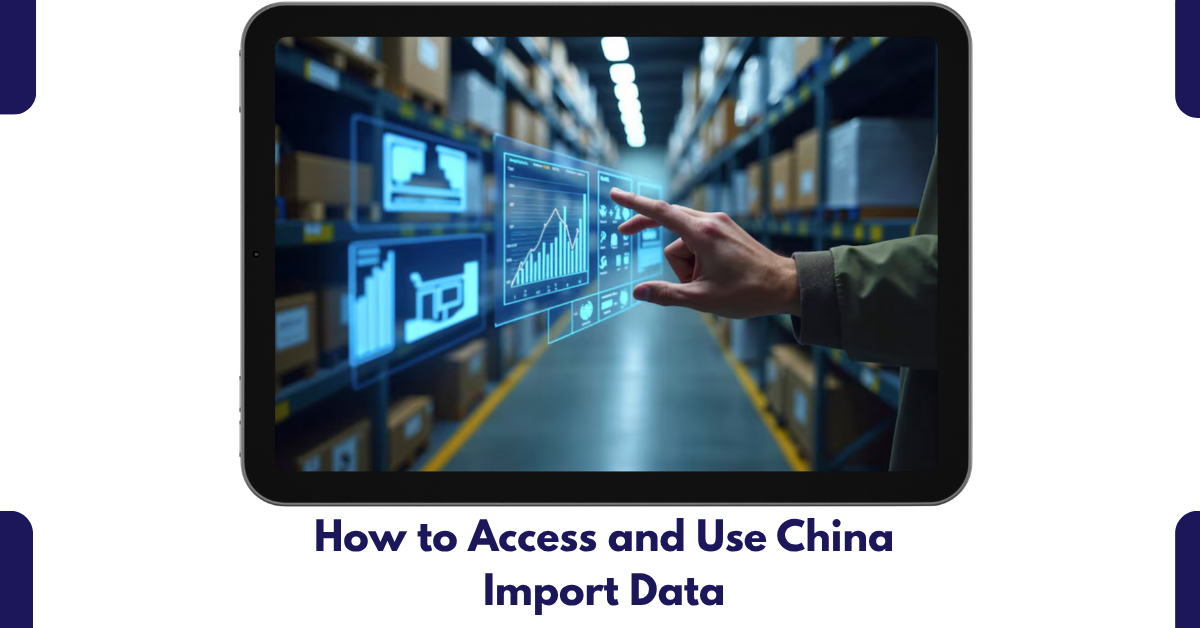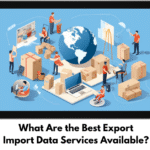Understanding the Rising Importance of Trade Information
International trade is no longer a theoretical tale of ships arriving at harbors and containers being unloaded. Now, data is the actual compass pointing companies through stormy global markets. In some of the most closely watched datasets globally, China import data 2025 is a crucial pool of information. It reveals not only figures, but trends, possibilities, and threats inherent in the complex web of trade of the world’s biggest exporter and one of the largest importers.
Why Businesses Seek China Import and Export Insights
The focus is immediately brought to the irrefutable fact: China holds an enormous percentage of international trade. Whether raw materials, equipment, electronics, or consumer products, all industries feel the beat of China import and export data. Big companies, small enterprises, and even governments study this data to:
Determine sourcing opportunities.
Find changes in supply chain reliance.
Forecast price changes.
Watch competitor moves beyond borders.
The strategic value offered by China imports by country and China exports by country cannot be underestimated. Knowledge of these flows enables organizations to better plan procurement, renegotiate contracts, and mitigate unexpected risks.
The Expanding Role of China’s Trade in 2025
Interest is heightened upon reviewing projections. With China export data 2025 witnessing surges in the renewable energy sector, EV batteries, and technology components, companies are provided with a blueprint of where to shift. Similarly, China total imports 2025 reflect a bulging demand for commodities, chemicals, and high-tech machinery, providing exporters with clear market entry points.
Take the example. A European company manufacturing precision machinery can identify the surge in Chinese provinces’ demand for it by analyzing China imports and exports data 2024 and thus designing focused marketing campaigns. An Indian textile supplier, in turn, can monitor China imports by country to understand how their products are faring against the competition from Vietnamese or Bangladeshi rivals.
Challenges in Accessing China Import Data
Need to leverage this data commonly confronts hurdles. Publicly available numbers are often fragmented, generalized, or delayed. Exclusive reliance on old spreadsheets can mislead business strategies. Therefore, companies seek advanced data intelligence platforms that offer real-time access to China import data 2025 and fine-grained details such as shipment-level analysis, importer contact directories, and product classification codes (HS codes).
A second challenge is actually interpreting China export data properly. Volumes of data are useless without the right analytics tools. Decision-makers need dashboards, visualisation tools, and expert analysis to transform raw numbers into usable intelligence.
Practical Ways to Access and Use China Trade Data
Accessing Reliable Sources of China Import and Export Data
Government Portals and Customs Data
Official releases tend to be the base. Ministries and customs departments release China imports and exports data at periodic intervals. While sometimes late, these serve as trustworthy reference points.
Subscription-Based Market Intelligence Platforms
Specialized companies collect and process data into usable reports. These sources provide segmented breakdowns of China export data 2025, supplier information, and past trends.
Industry Associations and Trade Chambers
Most regional chambers of commerce monitor China imports by country to inform their members how to access niche markets.
International Trade Databases
UN Comtrade and ITC Trade Map platforms integrate China imports and exports data 2024 alongside cross-country comparison, making it possible to make a wider analysis.
Utilizing China Import Data Effectively
Market Entry Planning: Companies may review China exports by country to ascertain competitive positioning prior to entering certain industries.
Supply Chain Risk Management: Monitoring changes in China total imports 2025 identifies weaknesses in the availability of raw materials.
Competitor Benchmarking: Through monitoring China export data trends, businesses can gauge competitor performance and strategy.
Price Forecasting: Analyzing changes in China imports and exports data enables forecasting raw material price fluctuations.
Case Study Example
One U.S. electronics distributor previously depended entirely on local reports. They used shipment-level China import data 2025 to augment their information and saw a surge in semiconductor imports from South Korea to China. This enabled them to make early contracts with Korean suppliers, giving them a head start over a worldwide supply shortage.
The second example is of a Middle Eastern builder. Country-by-country China import analysis showed rising Chinese demand for top-quality steel. Based on this information, they invested in greater production capacity, and within one year, their exports grew by 20%.
Turning Data into Strategic Action
Action is not derived from numbers but from the insight excerpted from them. Using China export data 2025 and merging it with analytics can enable companies to make decisions regarding expansion, mergers, or diversification. At the same time, going through China imports and exports data 2024 gives a backward perspective, enabling companies to realize changing trade patterns.
The actionable actions are:
Integrating Analytics Tools: Utilize visualization dashboards to analyze China exports by country effectively.
Construction of Data Teams: Establish in-house capability to analyze China import data 2025 for industry-specific information.
Partnering with Consultants: Experts also decode China exports and imports data, providing tailor-made strategies.
Syncing Policy Changes: Tracking government trade policies along with China total imports 2025 reduces risks.
The Competitive Advantage of Trade Intelligence
With a hyper-competitive international economy, organizations can ill afford to rely on blind decision-making. China export data, China imports by country, and other granular datasets enable not just visibility but agility too. Organizations with such insights are better equipped to withstand supply disruptions, forecast demand more accurately, and negotiate better.
The China imports and exports horizon 2025 beckons challenges as well as opportunities. Those who master the art of deciphering and acting on this information will not just be part of international trade but will dictate it.
FAQs on China Import Data
Q1. What is included in China import data?
It includes product details, HS codes, supplier names, import values, and shipment records.
Q2. Why is China import data important?
It helps businesses track trade trends, analyze competitors, and discover reliable suppliers.
Q3. Which are the major imports of China?
China mainly imports crude oil, integrated circuits, iron ore, medical equipment, and agricultural products.
Q4. Where can I access China import data?
Import data can be accessed through global trade databases, government customs portals, and private data providers.
Q5. How can China import data help exporters?
Exporters use it to identify high-demand products, target Chinese buyers, and plan better market entry strategies.



